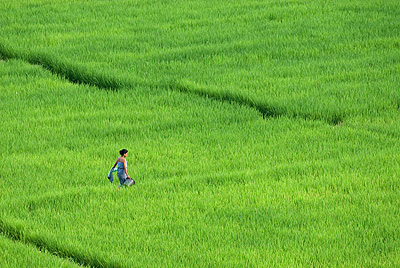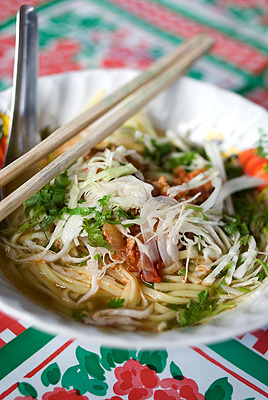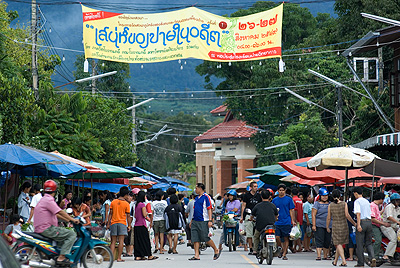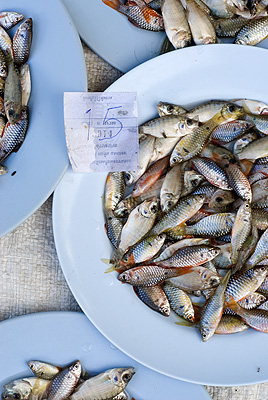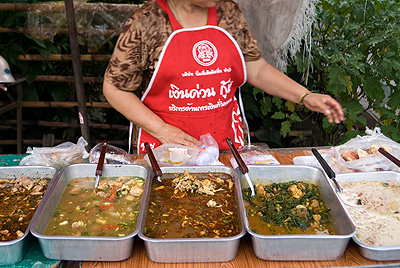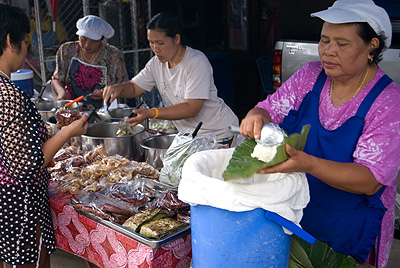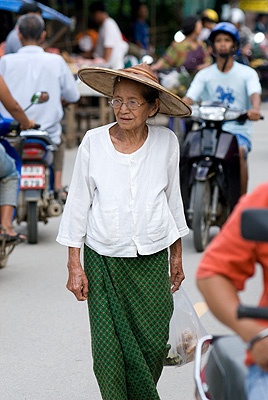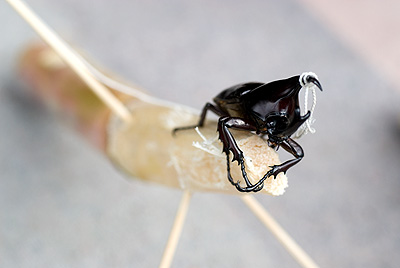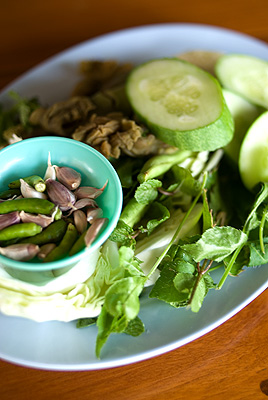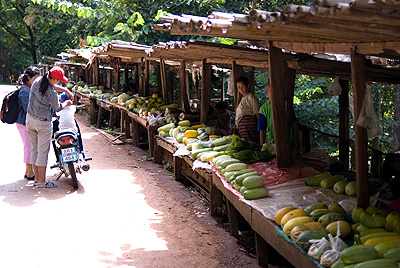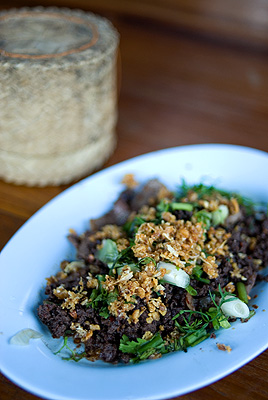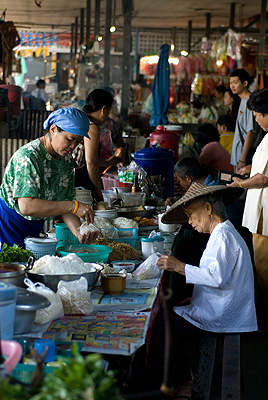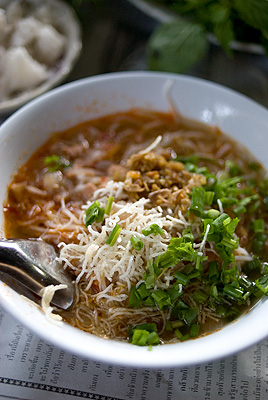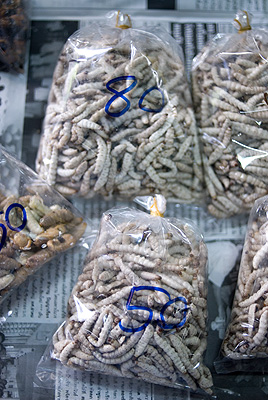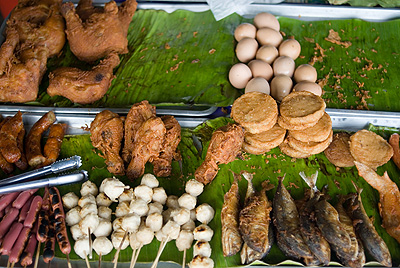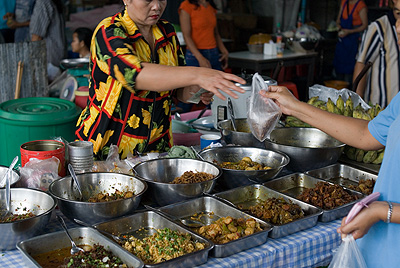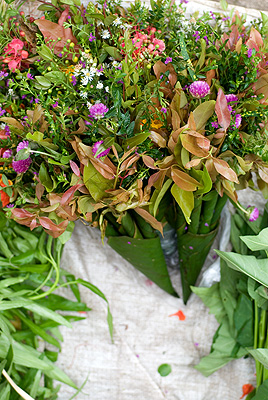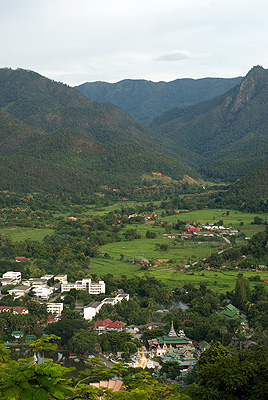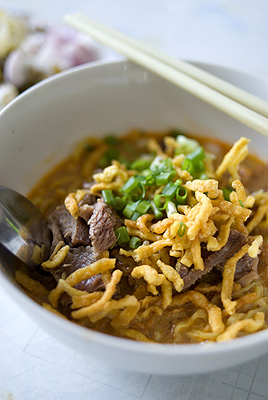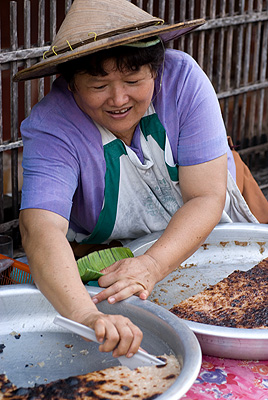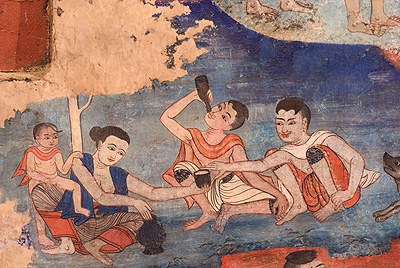This is going to be a long one. I just got back from a week in my favorite place in Thailand, Mae Hong Son. I've been there several times, and have even blogged about it previously, but this was the first time I'd been during the rainy season, and I couldn't believe how green it was:
For those of you who aren't familiar with Mae Hong Son, it is found in the far northwestern corner of Thailand along the border with Burma. It's Thailand's most moutainous and remote province, and is home to a group of people known as Shan or thai yai. The Shan belong to the Tai ethnolinguistic group (the word Shan might possibly be a Burmese mispronunciation of the word Siam), and their language is similar, although not mutally comprehensible, to Thai. Their homeland is over the border in Burma, and they have their own distinct food and culture, and Mae Hong Son is really the only place in Thailand where you'll find a lot of them.
I started out in Chiang Mai, where, before leaving, I stopped by my favorite temple there, Wat Paa Pao. This temple is associated with the Shan, and if you visit in the the morning or during a festival you can try their food:
This noodle dish with pork ribs and tomatoes is known as naam ngiaow (a dish I've previously mentioned here and here) and you'll find it anywhere you find Shan people.
From there I made my way over some very windy roads to Pai, sometimes referred to as the Khao San Road of the North. The whole backpacker scene there is a bit of a joke, but luckily the hippies haven't yet ruined the town with all their free sex and dreadlocks. When I'm in Pai I tend to avoid the vegetarian tofu laap and drum circles and head straight for:
1. The evening market:
Where there's raw ingredients:
prepared food:
traditionally dressed people:
and even fighting bugs:
2. Laap Khom Huay Pu (0 5369 9126). This is a restaurant just outside of town that serves the most amazing laap khua
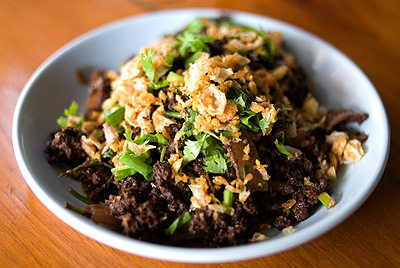
I've ever eaten. Taken with a plate of mostly bitter-tasting herbs
and a katip of sticky rice, and pehaps a glass of the locally-produced passion fruit juice, this is a meal I could probably eat every day for the rest of my life.
Moving on, I spent the next night in neighboring Pang Ma Phaa district, where by the side of the road you'll find hilltribe people selling vegetables and fruits they've grown:
And that night I ate, you guessed it, another dish of laap khua:
this specimen at a place called Laap Khom Phaa Toob. Of course inferior to that of Huay Pu, but only slightly so.
After two days I reached my destination, the provincial capital, Mae Hong Son. I love this city's morning market, where in one corner, you'll find a row of Shan women selling traditional breakfast dishes:
Many of these dishes revolve around soybeans, of which the Shan are very fond, but there's also the previously mentioned noodle dish:
At the market you'll also find deep-fried bamboo worms:
some marginally more normal deep-fried stuff:
Shan curries:
and bunches of flowers meant to be given at temples:
This is Mae Hong Son as seen from the hilltop temple of Wat Phra That Doi Kong Mu:
Somewhere down there is a shop, Panoon Khaw Soi (0 5361 2384; 9 Th Phadungmuaytor), that serves a pretty mean bowl of khao soi:
And in Baan Phaa Bong, about 10km south of Mae Hong Son, you'll find this friendly lady selling sweets:
The thing she's cutting into is called thamin suay, thamin being the Burmese word for rice. It's a Shan "cake" of sticky rice sweetened with sugar and coconut milk, and was delicious.
Arriving back in Chiang Mai, I had some time to take photos of the 100+ year-old murals at Wat Phra Singh:
Which proves I'm not the only one obsessed with recording images food and eating!
For anybody visiting Mae Hong Son, in addition to the places mentioned above, I recommend the following restaurants:
Baan Phleng (look for yellow shop with sign reading ‘Local Northern Thaifood’; 0 5361 2522; 108 Th Khunlumpraphat) Located just south of ‘downtown’ Mae Hong Son, this popular restaurant is the best place to try northern Thai and Shan food. Come at lunch, when as many as 30 different dishes are on display; simply point to what looks interesting or refer to the English-language menu.
Mae Sri Bua ('Local Shan Food'; 0 5361 2471; 51 Th Singhanatbamrung) Like the Shan grandma you never had, Auntie Bua prepares more than a dozen different Shan curries, soups and dips on a daily basis. I recommend the kaeng hang ley, a curry of pork belly with a flavor not unlike American-style barbecue sauce (but much better!).












